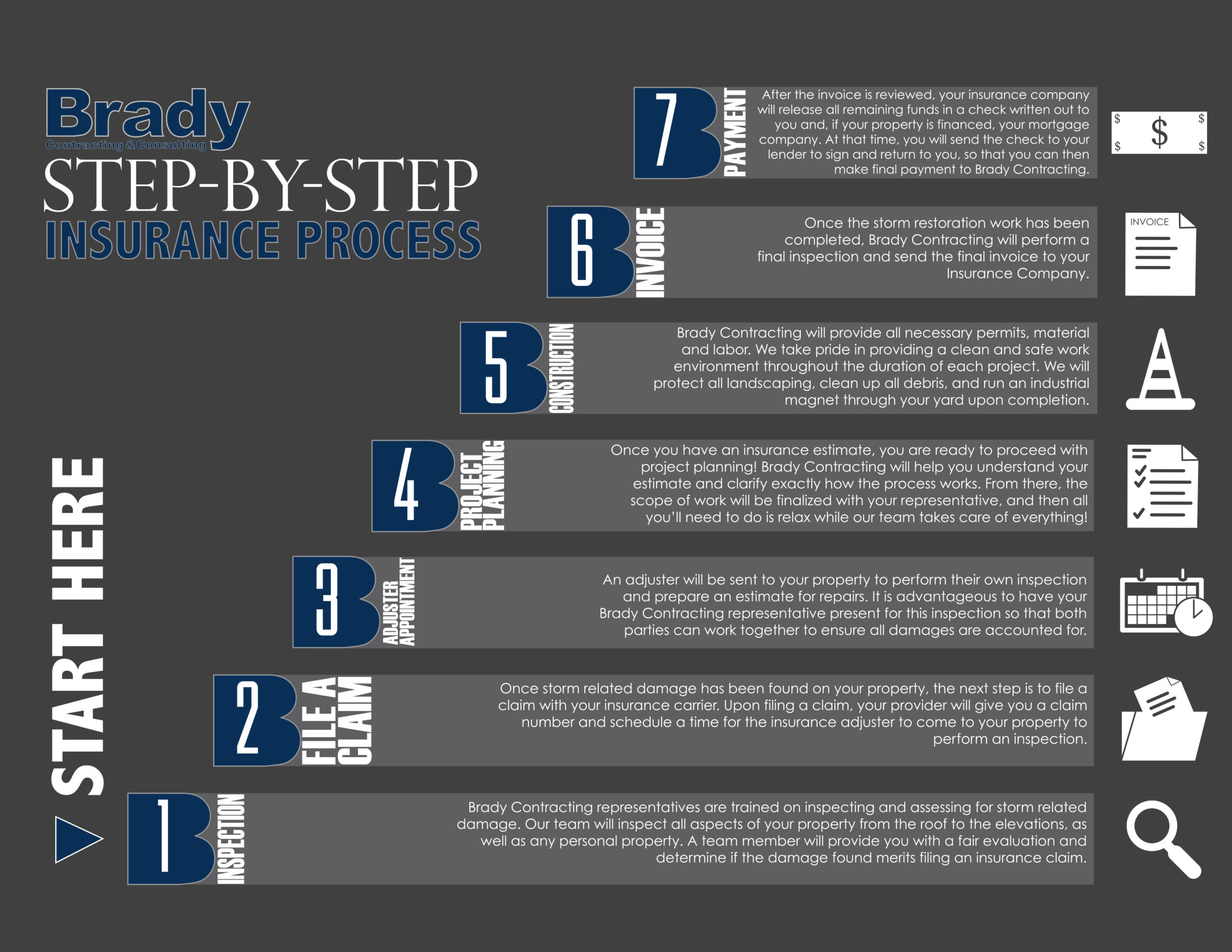INSURANCE

F.A.Q.s
What is hail damage and how do I find out if my property has been affected by the storm?
High winds and quarter-sized or larger hail can cause substantial damage to roofs, siding, gutters, downspouts, windows, doors, paint, decks, fences, and any other exterior component of your home or business. It only has to hail for a few seconds for property to sustain damage.
Building materials absorb hail impacts differently. For example, hail can cause dings in aluminum siding, gutters or asphalt shingles, whereas it can crack vinyl siding or wood shakes. Softball-sized hailstones can be dense enough and strong enough to puncture a roof. Additionally, the age and condition of a roof could affect the degree of damage.
Damage to the roof is not always visible from the ground. Strong wind gusts can rip loose shingles causing exposure of roofing underlayment and eventual leaking. Wind-driven hail causes composition asphalt roofs to suffer granule loss. Granule loss causes premature UV sun-related cracking of the protective asphalt underlayment, decreasing the life expectancy of your roof.
Will failing to identify and repair my home for hail damage affect its future resale value?
Yes. If your home is located in an identified storm damaged area, it will be flagged by an appraiser during the resale process. During resale, your home will be inspected for hail related damages. If your home is found to possess damages that have not been repaired, the resale value of your home will be lowered accordingly. You have a limited period of time to file a hail loss claim, so please address this issue now rather than later.
My claim was denied or my insurance carrier only paid for some repairs. What can I do now?
You are entitled to two inspections, by two different adjusters representing your insurance company. Denied or partial claims often stem from insurance companies changing the scope of what they are covering under their hail policy. Initial inspections, especially those performed without a contractor present to advocate on the homeowner’s behalf, are often held to more stringent guidelines. If you notice neighbors getting substantial amounts of work done on their homes, have your home inspected by a knowledgeable contractor. If the contractor feels there is more damage than noted in your first adjustment, call your insurance company and request a re-adjustment. This is not an unusual request so do not be afraid to exercise this right. Have the second adjuster meet with your contractor of choice and jointly re-inspect the property. If the damage is there, you should achieve a more favorable outcome.
